Nose Surgery in Budapest
Search and Compare the Best Clinics and Doctors at the Lowest Prices for Nose Surgery in Budapest

Find the best clinics for Nose Surgery in Budapest
With Medijump you can browse 12 facilities offering Nose Surgery procedures in Budapest. The cheapest price available is $1,214 in Budapest. And for the cheapest price globally, prices start from $101 in Poland.
Nose Surgery in Hungary
Price: $ 1,214
Nose Surgery in Budapest
Price: $ 1,214
Poland offers the best prices Worldwide
Price: $ 101
From 5 verified reviews
Judit Bugan, 16 September 2020
Dear Everybody!I can only talk about all the staff of the clinic in superlatives! I beautified under the hands of Dr. Zsombor Varga, exchanged implants and became fabulous. I recommend to everyone!!! Besides his professionalism, his personality is not negligible, he is infinitely kind, I have never felt so safe before.THANKS!Yours sincerely, Judit Bugán
From 40 verified reviews
Lambert Andrea, 22 September 2020
I was scheduled for surgery 2 hours after check-in, the treatment was adequate.
Szeptest Cosmetic Surgery, located in Central Budapest, Budapest, Hungary offers patients Nose Surgery procedures among its total of 29 available procedures, across 1 different specialties. The cost of a Nose Surgery procedure starts from ฿49,900, whilst the national average price is approximately ฿76,450. All procedures and treatments are undertaken by the lead specialist at the Clinic, and they are not accredited by any recognized accreditations institutes
Dolemed Aesthetic Clinic, located in Central Budapest, Budapest, Hungary offers patients Nose Surgery procedures among its total of 39 available procedures, across 3 different specialties. The cost of a Nose Surgery procedure ranges from ฿74,900 to ฿94,100, whilst the national average price is approximately ฿76,450. All procedures and treatments are undertaken by the lead specialist at the Clinic, and they are not accredited by any recognized accreditations institutes
Dr. Molnar Clinic, located in Central Budapest, Budapest, Hungary offers patients Nose Surgery procedures among its total of 37 available procedures, across 2 different specialties. The cost of a Nose Surgery procedure starts from ฿80,600, whilst the national average price is approximately ฿76,450. All procedures and treatments are undertaken by the lead specialist at the Clinic, and they are not accredited by any recognized accreditations institutes
Art Real Plastic Surgery, located in Central Budapest, Budapest, Hungary offers patients Nose Surgery procedures among its total of 29 available procedures, across 1 different specialties. The cost of a Nose Surgery procedure starts from ฿92,200, whilst the national average price is approximately ฿76,450. All procedures and treatments are undertaken by the lead specialist at the Clinic, and they have multiple recognized accreditations, including: ISAPS (International Society of Aesthetic Plastic Surgery)IPRAS (International Confederation for Plastic Reconstructive & Aesthetic Surgery)
Premium Plastic Surgery Clinic - Budapest, located in Central Budapest, Budapest, Hungary offers patients Nose Surgery procedures among its total of 49 available procedures, across 9 different specialties. The cost of a Nose Surgery procedure starts from ฿115,000, whilst the national average price is approximately ฿76,450. All procedures and treatments are undertaken by the lead specialist at the Clinic, and they are not accredited by any recognized accreditations institutes
Royal Clinics Medical Aesthetic Center, located in Central Budapest, Budapest, Hungary offers patients Nose Surgery procedures among its total of 11 available procedures, across 1 different specialties. The cost of a Nose Surgery procedure ranges from $2,077 to $2,540, whilst the national average price is approximately $2,124. All procedures and treatments are undertaken by just a small team of specialists, with 3 in total at the Clinic, and they are not accredited by any recognized accreditations institutes
Dr Vincente Rodrigo Facial Specialist, located in Central Budapest, Budapest, Hungary offers patients Nose Surgery procedures among its total of 14 available procedures, across 1 different specialties. The cost of a Nose Surgery procedure starts from £2,496, whilst the national average price is approximately £1,667. All procedures and treatments are undertaken by the lead specialist at the Hospital, and they have multiple recognized accreditations, including: ÁNTSZ - National Public Health and Medical Officer ServiceMagyar Plasztikai Helyreállító és Esztétikai Sebész Társaság
Professio Plastic Surgery Budapest, located in Central Budapest, Budapest, Hungary offers patients Nose Surgery procedures among its total of 9 available procedures, across 2 different specialties. The cost of a Nose Surgery procedure starts from £953, whilst the national average price is approximately £1,667. All procedures and treatments are undertaken by the lead specialist at the Hospital, and they are not accredited by any recognized accreditations institutes
Dr. Jaberansari Plastic Surgery, located in Central Budapest, Budapest, Hungary offers patients Nose Surgery procedures among its total of 25 available procedures, across 2 different specialties. Currently, there's no pricing information for Nose Surgery procedures at Dr. Jaberansari Plastic Surgery, as all prices are available on request only, whilst the national average price is approximately ฿76,450. All procedures and treatments are undertaken by the lead specialist at the Clinic, and they are accredited by IPRAS (International Confederation for Plastic Reconstructive & Aesthetic Surgery)
Elite Clinic, located in Central Budapest, Budapest, Hungary offers patients Nose Surgery procedures among its total of 26 available procedures, across 1 different specialties. Currently, there's no pricing information for Nose Surgery procedures at Elite Clinic, as all prices are available on request only, whilst the national average price is approximately $2,124. There are many specialists available at the Clinic, with 6 in total, and they have multiple recognized accreditations, including: EBOPRAS - European Board of Plastic Reconstructive and Aesthetic SurgeryESPRAS - European Society of Plastic, Reconstructive and Aesthetic SurgeryÁNTSZ - National Public Health and Medical Officer ServiceMagyar Plasztikai Helyreállító és Esztétikai Sebész Társaság
Compare Before & After Photos of _procedure_photos.phpNose Surgery
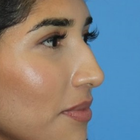
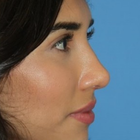
Full-side view
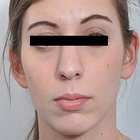

Front view
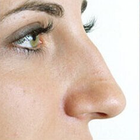
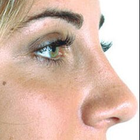
Full-side view
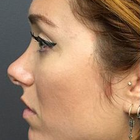
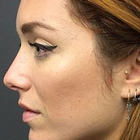
Full-side view
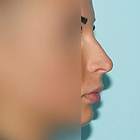
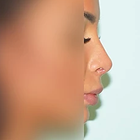
Full-side view

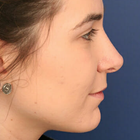
Full-side view
WHY US?
At Medijump, we're making medical easy. You can search, compare, discuss, and book your medical all in one place. We open the door to the best medical providers worldwide, saving you time and energy along the way, and it's all for FREE, no hidden fees, and no price markups guaranteed. So what are you waiting for?

Free

Best Price

Widest Selection

Risk-Free
What you need to know about Nose Surgery in Budapest
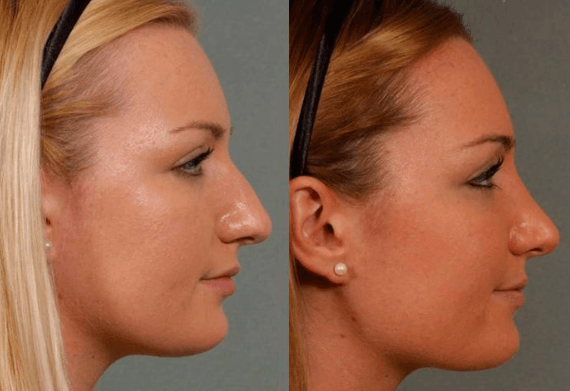
Commonly referred to as a Rhinoplasty, it is the medical term for reshaping of the nose or corrective surgery of the nose. It is one of the most common facial plastic surgeries (Facelift) procedures performed. Nose surgery can be performed to change the consequence of genetics, birth defect or nasal injury. It can be performed to enhance the appearance and/or to improve nasal breathing.
Surgery can be performed to correct nasal humps, the curvature of nose-bridge, nose tip irregularities, and asymmetry in the nostrils. The nasal appearance can be altered in various ways using intra-nasal chisels. Nose surgery procedures generally fall under three types: open rhinoplasty, closed rhinoplasty, and tip rhinoplasty. Rhinoplasty is normally performed under general anesthesia and will not leave any visible scars on the nose.
What does a Nose Surgery Procedure Involve?
Nose surgery is an individualized surgery. Before the surgery, you will need to discuss important factors with your surgeon to determine if it is suitable for you. Your surgeon will review your medical history, including your previous surgeries, medical conditions, and any medications you are taking. You will need to have a complete physical examination, such as blood tests. Your surgeon will also consider your other facial features, the skin on your nose, and what you would like to change or correct. Then, your surgeon will develop a customized plan for you. Two weeks before and after surgery, avoid any medications that contain aspirin or ibuprofen, such as Advil and Motrin IB because these medications can increase bleeding. You will need to also stop taking herbal remedies and over-the-counter supplements. If you are an active smoker, stop smoking because smoking can slow your healing process and increase the risk of getting an infection.
During the actual surgery, you will be given either local anesthesia or general anesthesia. The type of anesthesia depends on how complex the surgery is and what the surgeon would prefer to use. Then, the surgery will start by making incisions inside your nose or at the base of your nose between your nostrils. Your surgeon will reshape the inner bone and cartilage underneath your skin to make a more pleasing appearance.
There are several ways to change the shape of your nasal bones or cartilage, depending on your nose’s structure and how much needs to be removed or added. If only small changes are required, your surgeon may use cartilage taken from deeper inside your nose or your ear. However, for a much larger change, your surgeon may use cartilage from your rib, implants, or bone from other parts of your body. When the changes are finished, your surgeon will place the nose’s skin and tissue back. The incisions will be closed by stitches.
How Long Should I Stay in Budapest for a Nose Surgery Procedure?
If everything goes well, you can go back to your hotel on the same day once the effects of anesthesia wear off. However, you will need to stay in a recovery room for a few hours so the staff can monitor you. Some people may need to stay in hospital overnight. After you are discharged from the hospital, you will need to stay in Budapest for at least 10 to 14 days for initial recovery, follow-up checkups, and for the stitches to be removed.
What's the Recovery Time for Nose Surgery Procedures in Budapest?
The recovery period for nose surgery can be different from person to person. In general, 2 to 3 weeks is needed until you can get back to your full normal routine and 3 to 6 weeks until you can do any strenuous activity. However, you should be able to go back to work within a week, except if your job requires strenuous physical activity. You will feel gradually better each day in the first week. You will experience swelling, which can take six months to subside. The only people who will notice the swelling is you and your surgeon. Your final nose shape will be apparent after it is completely healed.
What sort of Aftercare is Required for Nose Surgery Procedures in Budapest?
After the surgery, you may need to wear a nasal splint for the first week. The splint is used to protect and support your nose. Your nose may be congested due to swelling or from the nasal splint. You need to rest in bed with your head raised higher than your chest to reduce bleeding and swelling. For a few days after the surgery, you may also experience slight bleeding and drainage of mucus. Your surgeon may place a “drip pad” under your nose to absorb drainage.
Your surgeon may ask you to avoid strenuous activity, take baths instead of showers, avoid blowing your nose, eat high-fiber foods to avoid constipation, not to do any facial expressions (smiling or laughing), not wearing pull clothing and wear button-downs instead.
For at least several weeks after the surgery, do not rest eyeglasses or sunglasses on your nose to prevent pressure. You should also wear SPF 30 sunscreen when you are outside because too much sun can cause permanent irregular discoloration to your nose. Do not put anything such as ice or cold packs on your nose even though it is swelling as the swelling will go away faster by limiting your dietary sodium.
What's the Success Rate of Nose Surgery Procedures in Budapest?
Nose surgery is known to have around 80% to 90% success rate. Nevertheless, just like any other surgery, it still has possible risks and complications. These risks are bleeding, infection, numbness, permanent nerve damage, and an adverse reaction to the anesthesia. You should call your surgeon immediately if you suspect any of the symptoms. Other possible risks are difficulty breathing through your nose, uneven-looking nose, persisting pain, swelling, and discoloration, scarring, septal perforation, and the need for a second or third surgery.
For an in-depth analysis of the closed rhinoplasty procedure with before and after images, watch this short video.
Are there Alternatives to Nose Surgery Procedures in Budapest?
If you do not want to undergo surgery, or if it is not suitable for you, you can get filler injections, such as Botox, Juvaderm, and Restylane. They can change the shape of your nose and only require a short visit to the doctor. This method is not painful and needs no incisions or stitches.
Whilst the information presented here has been accurately sourced and verified by a medical professional for its accuracy, it is still advised to consult with your doctor before pursuing a medical treatment at one of the listed medical providers
No Time?
Tell us what you're looking for and we'll reachout to the top clinics all at once
Enquire Now

Popular Procedures in Budapest
Prices Start From $404

Prices Start From $111

Prices Start From $70

Prices Start From $220

Prices Start From $1,945

Prices Start From $192

Prices Start From $500

Recommended Medical Centers in Budapest for Nose Surgery

- Interpreter services
- Translation service
- Religious facilities
- Medical records transfer
- Medical travel insurance
- Health insurance coordination
- TV in the room
- Safe in the room
- Phone in the room
- Private rooms for patients available

- Interpreter services
- Translation service
- Religious facilities
- Medical records transfer
- Medical travel insurance
- Health insurance coordination
- TV in the room
- Safe in the room
- Phone in the room
- Private rooms for patients available

- Interpreter services
- Translation service
- Religious facilities
- Medical records transfer
- Medical travel insurance
- Health insurance coordination
- TV in the room
- Safe in the room
- Phone in the room
- Private rooms for patients available

- Interpreter services
- Translation service
- Religious facilities
- Medical records transfer
- Medical travel insurance
- Health insurance coordination
- TV in the room
- Safe in the room
- Phone in the room
- Private rooms for patients available

- Interpreter services
- Translation service
- Religious facilities
- Medical records transfer
- Medical travel insurance
- Health insurance coordination
- TV in the room
- Safe in the room
- Phone in the room
- Private rooms for patients available

- Interpreter services
- Translation service
- Religious facilities
- Medical records transfer
- Medical travel insurance
- Health insurance coordination
- TV in the room
- Safe in the room
- Phone in the room
- Private rooms for patients available

- Interpreter services
- Translation service
- Religious facilities
- Medical records transfer
- Medical travel insurance
- Health insurance coordination
- TV in the room
- Safe in the room
- Phone in the room
- Private rooms for patients available

- Interpreter services
- Translation service
- Religious facilities
- Medical records transfer
- Medical travel insurance
- Health insurance coordination
- TV in the room
- Safe in the room
- Phone in the room
- Private rooms for patients available

- Interpreter services
- Translation service
- Religious facilities
- Medical records transfer
- Medical travel insurance
- Health insurance coordination
- TV in the room
- Safe in the room
- Phone in the room
- Private rooms for patients available

- Interpreter services
- Translation service
- Religious facilities
- Medical records transfer
- Medical travel insurance
- Health insurance coordination
- TV in the room
- Safe in the room
- Phone in the room
- Private rooms for patients available
Nose Surgery in and around Budapest
About Budapest
Budapest is the capital of Hungary and with A population of over 1.7 million, it is the most populous city in the country. Budapest is made up of three unified cities, Buda and Óbuda on the west bank of Danube and Pest on the east bank. The city is known as one of the most beautiful cities in Europe. Its historic monuments, charming architecture, healing thermal waters, wonderful food, and lively nightlife draw millions of people each year.
Nowadays, an increasing number of people have chosen Budapest as their medical tourism destination thanks to its well-known excellent healthcare. Dental treatments along with cosmetic and plastic surgery are the most popular treatment that attracts medical tourists to Budapest. Premium Plastic Surgery Clinic and Dr. Molnar Clinic are two of the highest ranked medical facilities in Budapest. Medical tourists come to Budapest for the following reason:
- Experienced, highly qualified doctors and surgeons.
- The best and most modern medical facilities.
- A friendly environment with English speaking staff.
- Medical treatment at significantly lower prices.
- Beautiful city to enjoy while recovering.
Popular Areas in Budapest
There are many places to explore in Budapest. The city is home to several UNESCO World Heritage Sites, Danube Panorama and Castle district is the most beautiful and romantic parts of Budapest with countless historical monuments; Andrássy Avenue and Heroes Square are home to the most impressive buildings such as the State Opera House; The banks of the Danube river is a great place to see many of Budapest’s best sights.
The Hungarian Parliament Building, one of the largest building in Hungary, was designed in the Gothic Revival style. The building gives an enchanting view from every angle, especially from the other side of Danube when tourists can see the whole building. Tourists can also go to Castle Hill, one of the most visited places in Budapest with beautiful buildings that date back to the 14th and 15th centuries.
To escape the city, visit City Park where you will find a zoo, a replica of Transylvanian Vajdahunyad Castle, and the Széchenyi Bath. For visitors who wish to shop, try Ecseri Flea Marker, a fantastic flea market to find a bargain.
Weather and Climate in Budapest
Budapest has four distinct seasons.
- Summer in Budapest tends to be nice and warm with an average temperature ranging between 23 to 28 °C (73 – 82 °F). Summer lasts from May until mid-September. Heavy showers usually occur in May and June. Many tourists choose the summer to visit the city.
- The autumn in Budapest has moderate temperature with little rains and long sunny days, autumn starts from mid-September to late October.
- Winter can be really cold with only a little sunshine; the average temperature is 3 to -7 °C (27 to 19 °F). Winter lasts from November to March.
- Spring in Budapest is said to be one of the most beautiful times in the city when the green spaces are in full bloom. Spring starts from March to April and sees a rapid increase in the temperature.
Getting Around in Budapest
Ferenc Liszt International Airport (commonly referred to as “Ferihegy”) is the main airport in Budapest and in Hungary. The airport connects Budapest with many cities around the globe, mainly Europe, Africa, the Middle East, and North America. There are several budget airlines that operate flights in this airport such as Wizz Air, EasyJet, and Ryanair.
To get to the city center, tourists can take a taxi or a bus. Taxis are relatively cheap, always make sure to use regulated taxis to ensure your safety. The fare for taxis is 300 HUF/Km (1.03 USD). A ride to Budapest from Ferenc Liszt International Airport usually cost around 7200 HUF (24.8 USD).
The bus is the cheapest option to get to the city center. Budapest’s airport shuttle bus (100E) connects Ferenc Liszt Airport with the city center (Deák Ferenc Square). The trip takes about half an hour. Purchase a ticket at the airport post office, BKK customer points in arrivals halls, the newsagents, and from the ticket machine at the bus stops. Bus drivers also sell tickets for 450 HUF (1.60 USD). It is better and simpler to purchase daily or multi-day passes which are valid for an unlimited number of trips within their validity periods. The multi-day pass costs 1650 HUF (6.15 USD).
The best way to explore Budapest is by walking because most tourist sites are within walking distance. An alternative to walking is cycling. Budapest offers a bicycle sharing system called BuBi. Metro, trams, trolleybuses, buses, and the HÉV suburban train line are also available to get around Budapest.
Tourist Visas in Budapest
Citizens of the European Union, the United States, and Canada can enter and stay in Hungary without a visa for up to 90 days. Citizens of EU/EEA members and 33 countries are granted visa-free entry for a maximum period of 90 days. The only condition is to have a passport valid for at least three months. Other foreign citizens need to apply and obtain a visa before entering the country.
As a part of the Schengen Agreement, holders of the Schengen Visa do not need to apply for a new visa. The Schengen Visa is only issued to citizens of countries who are required to obtain a visa before entering Europe.
Additional Information
- Local Currency: The official currency is the Hungarian Forint (HUF). 1 USD is equivalent to 290 HUF.
- Money & Payments: Tourists can withdraw money from ATMs. Credit cards (mainly Visa, MasterCard, and American Express) are accepted in restaurants, hotels, and even most taxis. There are several hotels and guesthouses that will accept euros. Tipping is always appreciated but not necessary.
- Local Language: The official language is Hungarian and is spoken by most of the population. Most people, especially in tourist areas, will know sufficient English.
- Local Culture and Religion: Budapest is home to one of the most populous Christian communities in Central Europe. Judaism is also a significant religion.
- Public Holidays: Budapest celebrates Christian holy days as in the rest of Hungary. The city hosts many festivals around the year such as Budapest Spring Festival, Budapest Easter Festival, Music Festival in Spring, as well as Food and Frink Festivals. The date for these festivals may differ from year to year.
Popular Searches
- Plastic Surgery in Thailand
- Dental Implants in Thailand
- Hair Transplant in Thailand
- Breast Augmentation Thailand
- Gastric Sleeve in Thailand
- Gender Reassignment Surgery in Thailand
- Laser Hair Removal in Bangkok
- Botox in Bangkok
- Dermatology in Bangkok
- Breast Augmentation in Bangkok
- Coolsculpting in Bangkok
- Veneers in Turkey
- Hair Transplant in Turkey
- Rhinoplasty in Turkey
- Stem Cell Therapy in Mexico
- Rhinoplasty in Mexico
- Liposuction in Mexico
- Coolsculpting in Tijuana
- Rhinoplasty in Korea
- Scar Removal in Korea
- Gastric Sleeve in Turkey
- Bone Marrow Transplant in India
- Invisalign in Malaysia
- Plastic Surgery in the Dominican Republic
- Tummy Tuck in the Dominican Republic
- Plastic and Cosmetic Surgery in Poland
- Rhinoplasty in Poland
- Hair Implant in Poland
- Dental Implants in Poland
- IVF in Turkey











